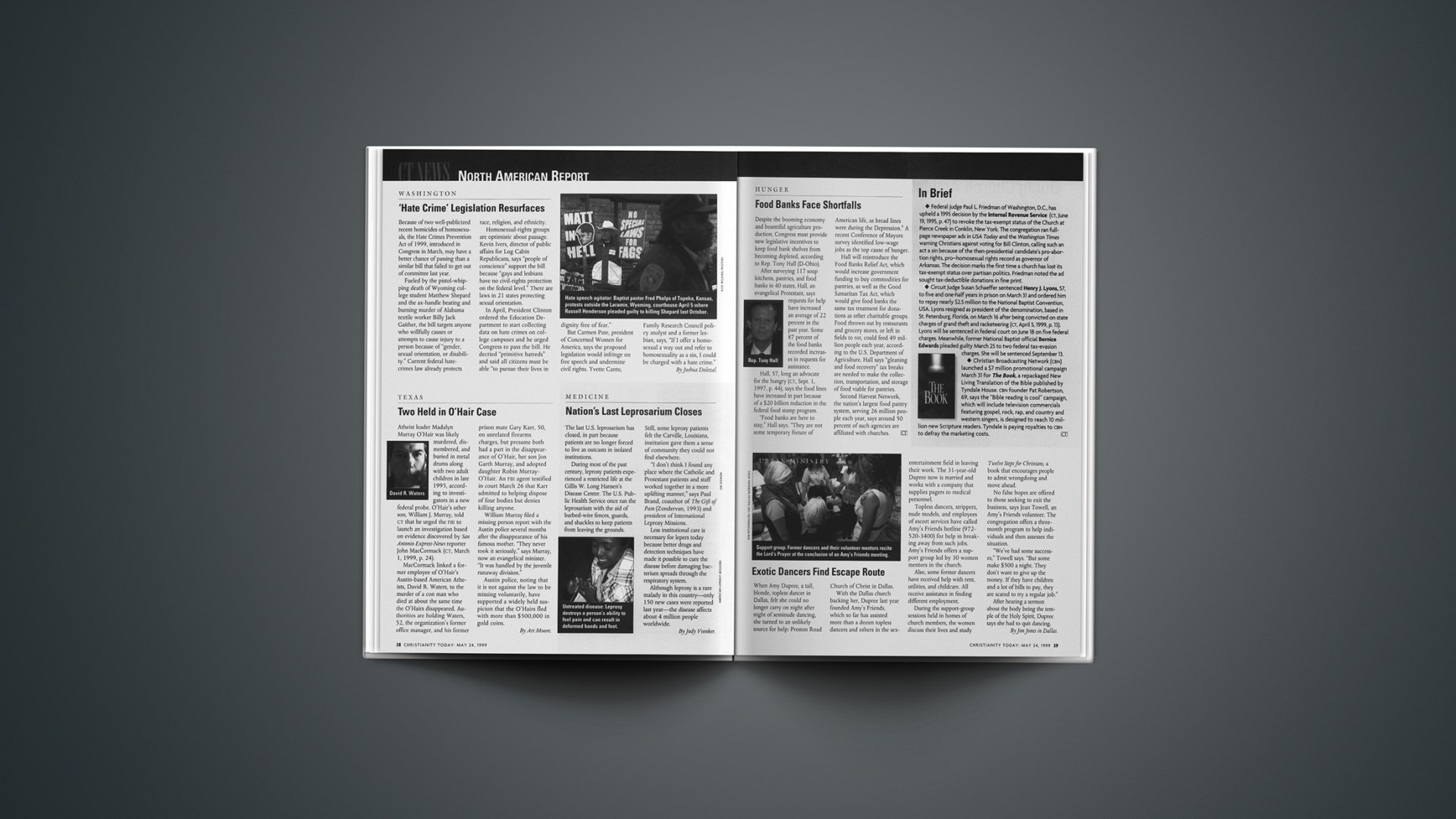The last U.S. leprosarium has closed, in part because patients are no longer forced to live as outcasts in isolated institutions.
During most of the past century, leprosy patients experienced a restricted life at the Gillis W. Long Hansen’s Disease Center. The U.S. Public Health Service once ran the leprosarium with the aid of barbed-wire fences, guards, and shackles to keep patients from leaving the grounds. Still, some leprosy patients felt the Carville, Louisiana, institution gave them a sense of community they could not find elsewhere.
“I don’t think I found any place where the Catholic and Protestant patients and staff worked together in a more uplifting manner,” says Paul Brand, coauthor of The Gift of Pain (Zondervan, 1993) and president of International Leprosy Missions.
Less institutional care is necessary for lepers today because better drugs and detection techniques have made it possible to cure the disease before damaging bacterium spreads through the respiratory system.
Although leprosy is a rare malady in this country—only 150 new cases were reported last year—the disease affects about 4 million people worldwide.
Copyright © 1999 Christianity Today. Click for reprint information.










